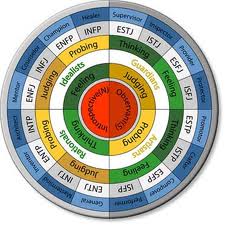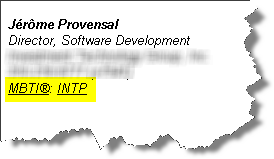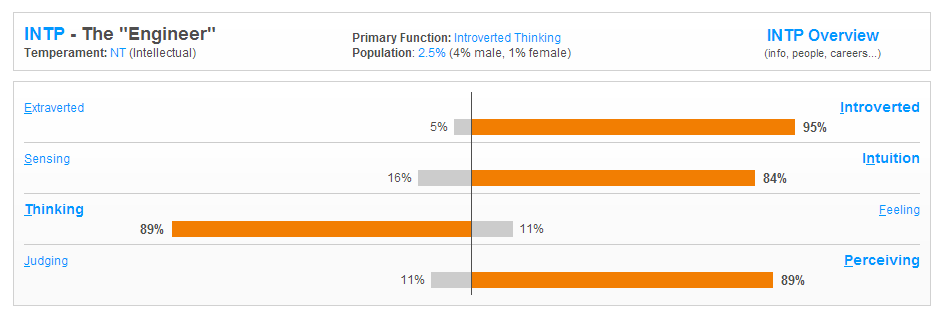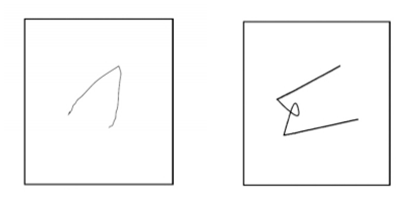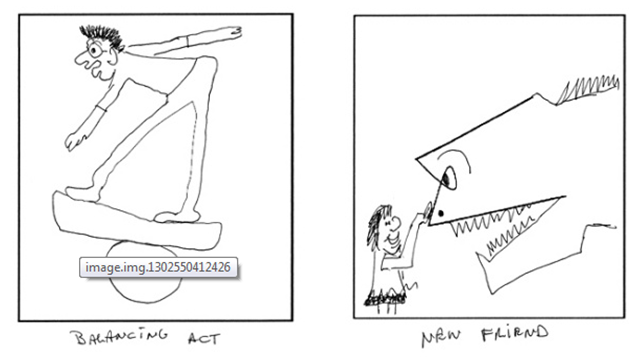Unleash your Raw creativity
Michael Michalko’s book: Thinkertoys: A Handbook of Creative-Thinking Techniques is so chock full of ideas on creativity, that once again, today’s post on “raw creativity” is inspired by the book.
Read this paragraph and unless you have done this experiment before, prepared to be astonished:
Aoccdrnig to a rscheearch at Cmabrigde Uinervtisy, it deosn’t mttaer in waht oredr the ltteers in a wrod are, the olny iprmoetnt tihng is taht the frist and lsat ltteer be at the rghit pclae. The rset can be a toatl mses and
you can sitll raed it wouthit porbelm. Tihs is bcuseae the huamn mnid deos not raed ervey lteter by istlef, but the wrod as a wlohe.
This shows that we all have a raw natural talent to interpret the essences of things. We make sense out of these jumbled letters because we immediately see the essence. This raw talent is why we are all creative as children. A box could be a fort, a car, a house, something to draw on and even a spaceship. When we are kids , our imaginations is not structured or restrained by rules, constraints of logic or risk of embarrassment. We did not strive to eliminate possibilities – we strove to expand them.
As we grow older and start making sense of the world that surrounds us or become expert in our fields, our brains become a blessing and a curse. A blessing because we can quickly grasp the complexity of our surroundings, understand how things connect together logically, and become adept at sensing and trimming the nonsensical ideas. Yet, it’s a curse because, by piling up constraints/structures and filtering out early ideas for the reason that they don’t directly abide by some logical rules, we end up with non-innovative ideas/solutions whose best redeeming value is that they conform to the mold that we wanted to escape.
Raw creative-thinking techniques are designed to remove the constraints of logic and free your imagination to be creative again. Pablo Picasso famously said, “Every child is an artist. The problem is how to remain an artist once we grow up.”. The value of learning “raw” creative techniques is to do just that – to learn how to think like a child again.
My favorite exercise to flex your raw creativity: synthesis
The book then goes on to describe 12+ exercises to help free imaginations to create innovative ideas. However, it would take too long to summarize all of them here. Here’s one of my favorite exercises called one + one = one(synthesis):
When one drop of water is added to another drop, they make only one drop not two. That’s how 2 completely different concepts can collide to form a brand new one. Consider the following examples: “home page”, “conference call”, and “race card”.
Much of creative thinking involves combining previously unrelated ideas, goods or services and turning them into something new. The process of combining ideas or elements or part of ideas is called synthesis.
The author coined the evocative “ideas having sex” phrase to describe this activity
For this exercise ask participants to think of a name of an object that begins with the same letter as their last name. Write the name on a sticky note and post it on their forehand and have the participants mingle around the room and combine their object with someone else’s in the room to create something new. For example:
- Deck + Legos: A put-in-together adjustable wooden deck that can be dismantled and stored
- Desk + Treadmill: A treadmill desk. You can walk at one-mph pace while you work at your computer, guaranteeing weight loss without dieting. BTW, the concept has been implemented successfully
- Stove + Bicycle: Portable kitchen. While in France this year, I saw a cooking TV show whose premise is to approach shoppers coming out of Parisian marchés (open-air markets) and offer them to prepare a great meal with whatever they were carrying in their grocery bags. The cooking was done on, you guessed it, a basic 2-burner stove, setup on tricycle. The show is aptly named: Street Cuisine.
- Tape + Glue: Scotch Tape (a true inventor classic)
- Ballot + Lottery: Encourage people to vote by having a lottery for voters. This too was implemented
- Shark + Spaceship: The movie Alien as suggested in the recent post: Metaphorical Thinking
- Etc…
For more exercise, do buy/read the book.
If you have young kids, watch them playing or better yet play alongside with them.
They might teach you a few things you forgot about the powers and pleasures of raw creativity!







